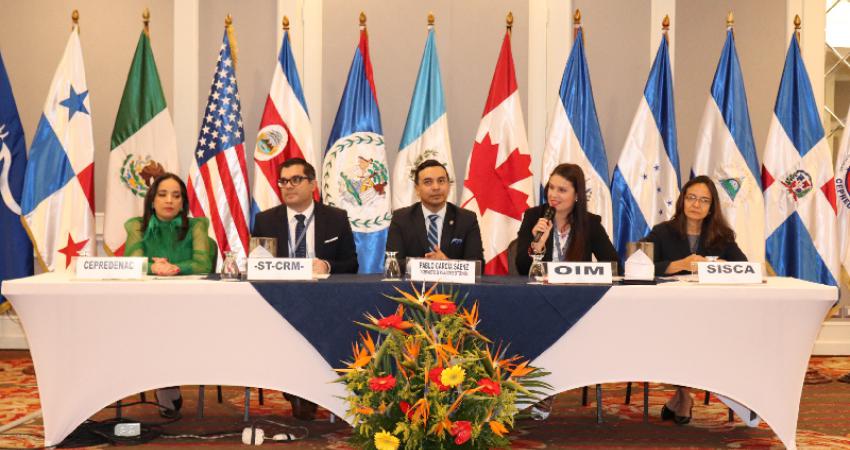IOM presents study on migration and emergencies in Central America

On August 21, the International Organization for Migration (IOM) presented the study “Migrants in Risk Reduction and Emergency Response in Central America,” as part of the Regional Workshop: The Key Role of Coordination and Information Management in Assisting Migrants in Disaster Situations, which was organized with CEPREDENAC, the Regional Conference on Migration (RCM), and OCAM.
The general objective of the study is to identify the extent to which the migrants are being incorporated in the legal and institutional frameworks of the National Risk Reduction and Emergency Response Systems of Central American countries, as established by the principle normative instruments on the matter.
Between 2000 and 2018, 261 natural disasters were recorded in Central America and over 20 million people were affected. Additionally, the region is considered a major migration corridor, with intra-regional migration, migration to North America, return migration, and extra-regional migration, primarily in transit. Given this context, it is essential for migrants to be properly included in risk reduction and emergency response.
This study seeks to offer practical recommendations to help states’ public policies and operational frameworks on the issue consider migrants and their needs for protection during the preparation for and response to a disaster. “IOM hopes that this report will be a useful contribution for strengthening national and regional dialogue between actors dedicated to emergency response and agencies that have a key role in the management of migration flows and migrant assistance,” stated Marcelo Pisani, Regional Director of IOM for Central America, North America, and the Caribbean.
The analysis was based on the countries’ disaster risk reduction instruments, classified as laws, regulations and degrees (of a binding nature), policies and plans (of a programmatic and strategic nature), and finally manuals, guides, and protocols (of an operative nature), on the basis of publicly available information, in order to determine the extent to which the migrants arebeing included in these national agendas.
The study concludes that it is essential to build understanding of migration in the context of natural disasters, establish an inter-institutional agenda for shared work, create a mechanism for recording and sharing information on vulnerable migrants in the region, and involve migrants in the regional migration and disaster risk reduction agenda.
“It is very important to have regional studies to highlight the issues we need to strengthen in the region, concerning disaster management in migration contexts. Having data to guide us and being able to reflect upon such situations in day to day work is very important for our decision-making, but also for designing wider plans, policies and instruments to strengthen the work we do in communities”, said Kristel Santamaría, representative of the International Red Cross and Red Crescent Federation.
This study was performed within the framework of the Guidelines to Protect Migrants in Countries Experiencing Conflict or Natural Disaster of the Migrants in Countries in Crisis Initiative (MICIC), supplementing the Migration Crisis Operational Framework (MCOF).
Download the study’s executive summary: http://www.programamesoamerica.iom.int/sites/default/files/migrantpopulation_executivesumm_1.pdf